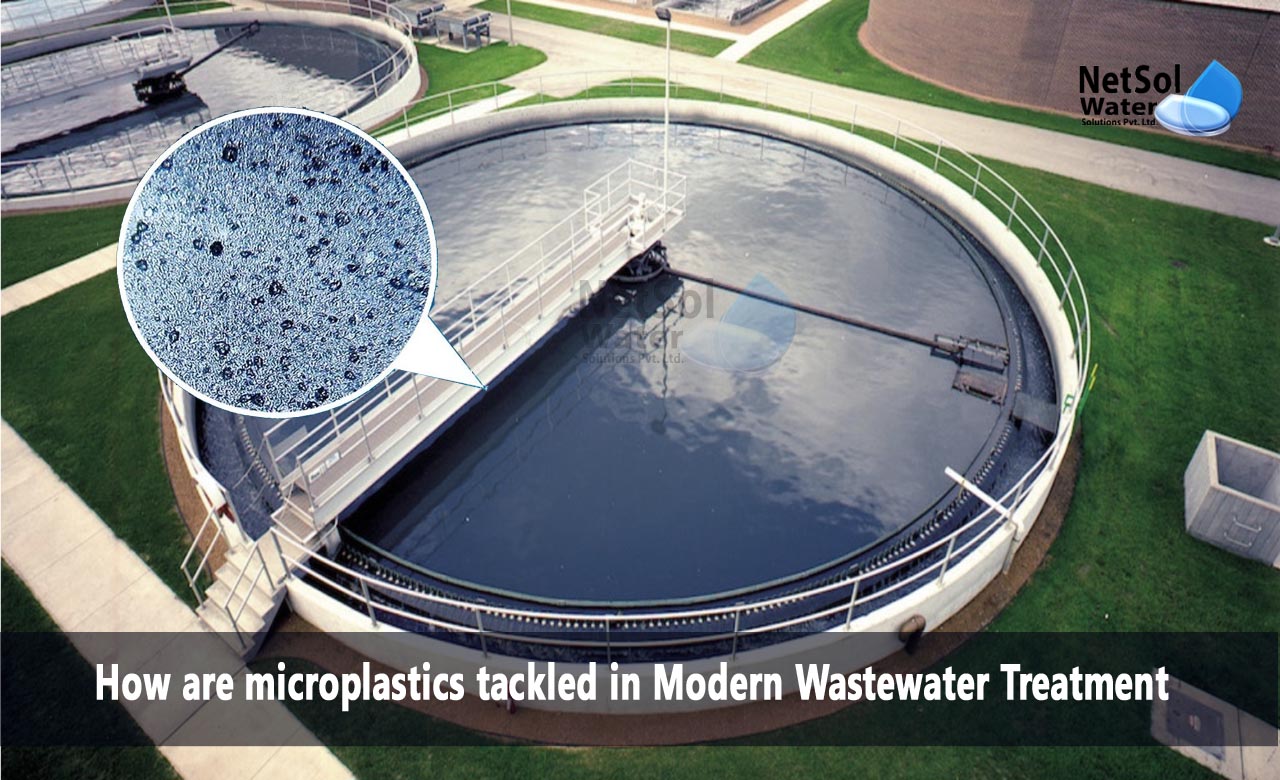How are microplastics tackled in Modern Wastewater Treatment?
Microplastics, which are microscopic plastic particles less than 5mm in size, have become a major environmental issue. They have been discovered in seas, rivers, soil, and even the air we breathe. Water is a major source of microplastics, which enter the environment through a variety of home and industrial activities. Managing microplastics in contemporary wastewater treatment is a critical step in reducing their impact on ecosystems. This blog delves into the methods and technologies employed to address this pressing issue.
Screening and Filtration
In wastewater treatment, screening and filtration are the initial lines of defense against microplastics. In wastewater treatment plants, bigger particles, including microplastics, are captured by a series of screens and filters. The size of the holes determines the efficacy of these screens, with finer screens capable of catching tiny microplastics.
To successfully combat microplastics, wastewater treatment plants are rapidly updating their filtration systems with modern technologies such as microfiltration and ultrafiltration. These methods employ membranes with narrower holes, allowing for the removal of even the smallest microplastics.
Coagulation and Flocculation
Coagulation and flocculation are chemical processes that help remove microplastics from wastewater. Coagulants are added to the water in this procedure, causing microplastic particles to agglomerate or clump together. Following this, flocculation occurs, in which moderate stirring favors the production of bigger flocs that may be easily removed via sedimentation or filtering.
Coagulation and flocculation's performance in microplastic removal is heavily reliant on choosing the proper coagulants and adjusting the treatment settings. It is a useful approach for catching microplastics that are too tiny to be removed by physical screening alone.
Activated Carbon Adsorption
Activated carbon is a flexible adsorbent that can collect a wide range of contaminants, including microplastics, in wastewater treatment. Water travels across a bed of activated carbon particles, which attract and bind to microplastic particles in this process. Activated carbon gets saturated with microplastics over time and must be replenished or regenerated.
Because activated carbon adsorption has a high removal efficiency for microplastics, it is a significant method for dealing with these contaminants in wastewater. However, effective management of wasted activated carbon is required to avoid the release of collected microplastics back into the environment.
Biological Treatment
For microplastic removal, biological treatment procedures such as activated sludge and biological nutrient removal have been investigated. These systems' microorganisms can aid in the breakdown of organic materials, including microplastics. While not as successful as physical or chemical approaches, biological treatment can help to remove microplastics and degrade certain microplastics.
Biodegradation and the function of microorganisms in lowering microplastic contamination in wastewater treatment are topics of ongoing research.
Advanced Oxidation Processes
Advanced oxidation processes (AOPs) employ strong oxidants to break down organic pollutants. Microplastic removal AOPs such as ozonation and UV/H2O2 have showed potential. Microplastics can be broken down into smaller, less damaging particles or converted into compounds that are less persistent in the environment using these procedures.
Challenges and Future Directions
While current wastewater treatment systems are excellent in removing microplastics, there are still problems. Microplastics vary in size, shape, and composition, making a one-size-fits-all method challenging to execute. Furthermore, the growing production and use of plastics presents a continuous difficulty in handling microplastics in wastewater.
Research and innovation in treatment methods and legislation are required to enhance the management of microplastics in wastewater treatment. Furthermore, raising public awareness and reducing plastic usage are critical to reducing microplastics in the environment.
Conclusion
Combating microplastics in contemporary wastewater treatment is an important part of our efforts to safeguard aquatic ecosystems and human health. Treatment facilities are making considerable progress in eliminating and lowering the presence of microplastics in wastewater by combining physical, chemical, and biological treatment approaches. However, further study and a community commitment to plastic waste reduction are required to adequately solve this worldwide environmental crisis.
Netsol Water is Greater Noida-based leading water & wastewater treatment plant manufacturer. We are industry's most demanding company based on client review and work quality. We are known as best commercial RO plant manufacturers, industrial RO plant manufacturer, sewage treatment plant manufacturer, Water Softener Plant Manufacturers and effluent treatment plant manufacturers. Apart from this 24x7 customer support is our USP. Call on +91-9650608473, or write us at enquiry@netsolwater.com for any support, inquiry or product-purchase related query.



